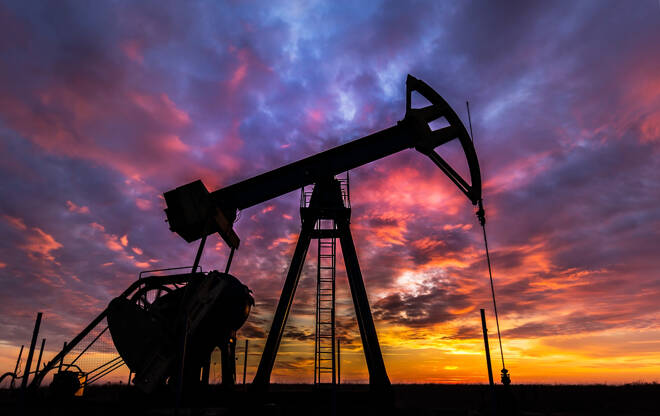Oil Volatile, but Defends Bullish Trend
By:
It has been a rough month for oil as it struggled to regain any meaningful uptrend momentum, but the overall situation still favors more upside.
IEA & OPEC Upgrade Oil Forecasts
The International Energy Agency (IEA) predicts that energy demand will grow by 4.6 percent in 2021 as economies across the globe recover from the COVID pandemic. The agency noted that this growth in demand would more than make up for the 4-percent contraction in global energy demand last year.
The majority of the anticipated energy demand growth – some 70 percent – will come from Asia.
When it comes to oil, the agency expects that oil demand will rise by 6.2 percent from last year. Still, it will remain some 3 percent below levels last seen in 2019. Oil demand for road transportation is set to rebound by the end of 2021, but oil demand for air travel will remain 20 percent lower than 2019 levels until the end of 2022.
Additionally, the Organization of the Petroleum Exporting Countries (OPEC) have also upgraded their forecast for world oil demand growth this year.
Elsewhere, the throughput of Chinese refineries in March averaged 14.08 million barrels per day, up 19.7% yearly, thanks to the recovery in fuel demand.
India Unhappy with Rising Oil
However, the situation is not so optimistic everywhere. For example, India, the world’s third-largest oil importer, is certainly not happy with rising global demand, as it pushes the oil price higher.
We all know the price of oil went to zero in April 2020. India was quick to use the opportunity to stock up on cheap oil. According to India’s Ministry of Petroleum and Oil, the country bought oil at 19 USD a barrel to its reserves, saving nearly 700 million USD in the process. As the price rallied from 19 USD to over 60 USD, India has to pay much more now.
Moreover, India expressed its frustration with the OPEC+ decisions to keep markets tight, blaming OPEC+ for its “artificial cuts to keep the price going up.”
The Summer Season Begins
The summer season is coming, which usually means much more traveling, leading to elevated demand for oil and energies. Therefore, oil could head further up this season as the world tries to return to normalcy after many months of lockdowns, that left people undoubtedly wanting to spend their holidays someplace nice.
Cruisers and airlines, two of the biggest oil consumers, are expected to operate at nearly the standard capacity this summer as vaccinations are ramping up across the globe.
Monetary Policy and Oil
Oil, along with copper, tends to be the best inflation hedge across the financial markets. The proof of that statement lies in the charts; take a look at the massive trends which started back in March/April of 2020, when central banks began to flood the markets with infinite amounts of money. Considering that oil went below zero, and now trades above 60 USD, it has clearly been a gigantic rally.
Inflation continues everywhere – other industrial commodities are going vertical, such as lumber. Grains have also soared sharply over the recent months. Home prices skyrocketed, and stock indices are rising to new highs each month.
Despite markets pricing in three to four rate hikes throughout 2022 and 2023, we are still far from normalizing monetary policy. Therefore, inflation will most likely shoot above 3% in the US before the Fed starts to tighten its ultra-loose policy. This leaves a window of a couple of months for oil to move even higher.
Lately, the dollar index moved lower, and it looks like bulls are struggling to maintain bullish momentum, supporting the bullish case for oil.
Combining the rising demand, ultra-loose monetary policy, soaring inflation, and the upcoming holiday season, we think that oil should remain in a long-term uptrend, and any dips should be bought.
For a look at all of today’s economic events, check out our economic calendar.
About the Author
Peter Bukovcontributor
Peter comes from a background in corporate finance which began in 2013 when he completed the Corporate Finance Program at the University of Economics in Bratislava. He’s been actively involved in the market sector since 2008 and got his hands-on experience in trading in 2011.
Advertisement
